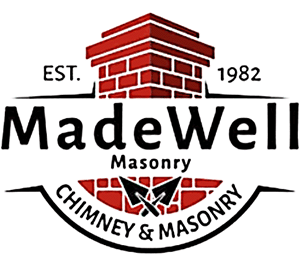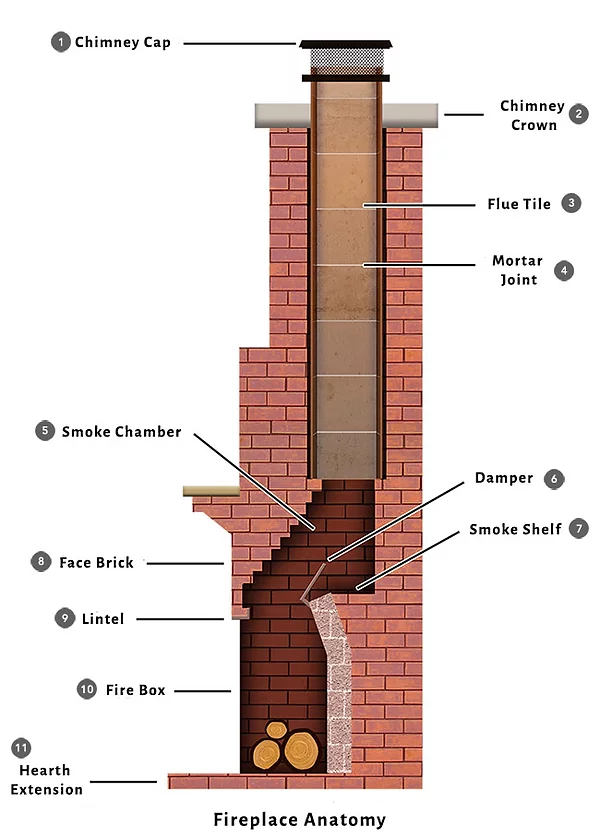Many of us have used a fireplace for years, but how is it constructed? Let’s demystify it by providing a visual of the components of the fireplace with an explanation of each vital part contributes.
- Chimney Cap – A chimney cap is a covering for the top of your chimney, and it usually includes wire mesh. A chimney cap prevents water from entering the chimney. Moisture can enter the flue anytime it rains, without a chimney cap. This can cause water to get inside the attic or house as it runs down the brickwork. The moisture can damage your walls and ceiling. A chimney cap can stop downdrafts from entering the home. Downdrafts can cause your home to fill with smoke. Especially in windy areas, a chimney cap can be extremely beneficial in helping to make the home more energy efficient. Cold blasts of air are prevented from entering into homes equipped with a chimney cap.
- Chimney Crown – The chimney crown (also referred to as the chimney wash) is the top element of a masonry chimney. It covers and seals the top of the chimney from the flue liner to the chimney edge. The crown should provide a downward slope that will direct the water from the flue to the edge of the crown.
- Flue Tile – Whether your masonry chimney is used to vent a fireplace, woodstove or furnace, most have sections of clay flue tile stacked one on top of the other to form a liner called the flue. The flue liner should be tightly sealed to protect the integrity and efficiency of your chimney.
- Mortar Joint – A mortar joint is the space between concrete blocks or bricks in masonry construction. This space is filled with a compound made of cement, aggregate and water referred to as mortar. One of the main purposes of mortar is to act as a bonding agent between the blocks, holding the wall together.
- Smoke Chamber – The smoke chamber is the area above the fireplace firebox (where you build your fire) just below the flue. This space is used to allow smoke to mix and curl in a circular motion and rise into the flue.
- Damper – A fireplace damper, usually located in the throat of a masonry chimney just above the firebox, is a device that is meant to seal your fireplace shut when it is not in use. This is necessary so that heated air from your home will not escape up the chimney when the fireplace is not being used. An open or leaky damper can add hundreds of dollars a year to your heating costs.
- Smoke Shelf – To prevent downdrafts form the outside form interfering with updrafts carrying smoke and gases, a smoke shelf is provided. Its function is to bounce downdrafts back up the chimney. The smoke shelf runs the full length of the throat. Its depth ranges from 6″ to 12″ according to the depth of the fireplace.
- Face Brick – The fireplace face or surround is the part of the fireplace surrounding the firebox that you see in the room. It’s made of brick, stone, concrete or other noncombustible materials. Its purpose is to ensure the area outside the inner hearth doesn’t catch fire.
- Lintel – The lintel is a piece of steel that holds up the top row of bricks in the fireplace opening. It is used by the mason during installation of the fireplace to hold the bricks firmly in place until the mortar dries.
- Fire Box – Your firebox is the part of your fireplace where the actual fire burns. … Masonry fireplaces—which are built of bricks or other stone—typically have a brick firebox. If you have a prefab fireplace, your firebox is most likely made of metal.
- Hearth Extension – The hearth extension is the noncombustible material in front of and at the sides of a fireplace opening. Hearths and hearth extensions are designed to prevent sparks from leaving the fireplace and igniting nearby combustibles.


Recent Comments